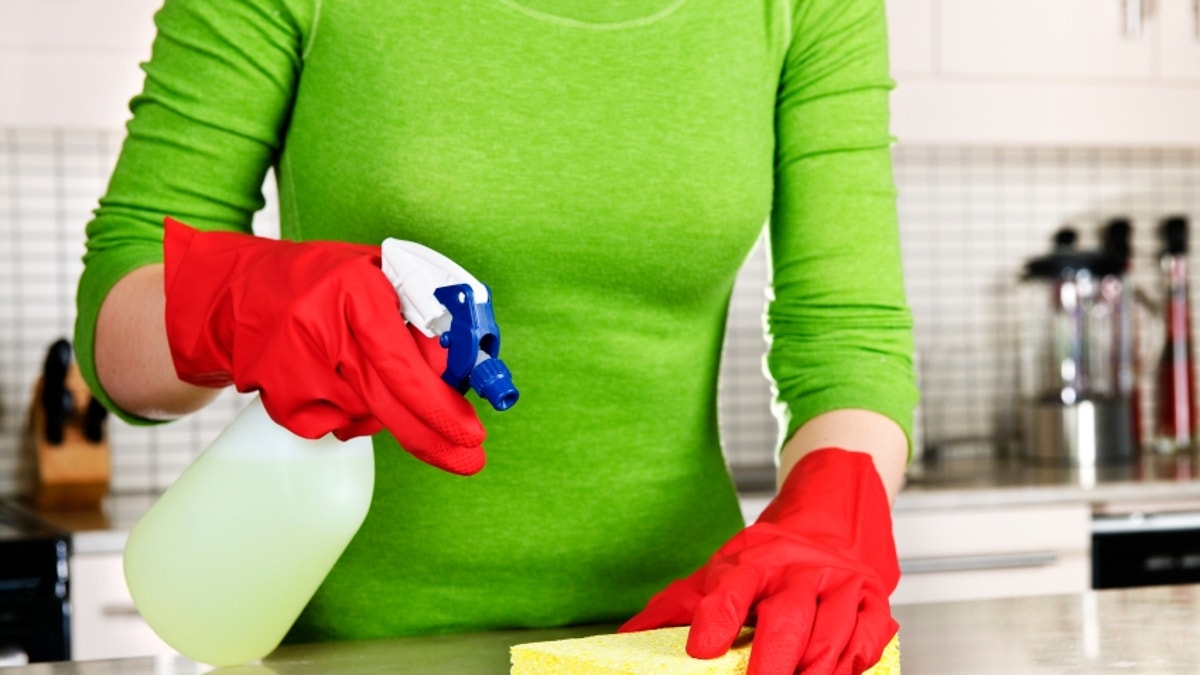
Girl cleaning kitchen with sponge and rubber gloves
When a product becomes trendy or appealing to consumers, manufacturers respond.
It’s why over the last few years, you’ve probably noticed a proliferation of “all-natural” this, “organic” that and “green” as far as the eye can see, whether on food packaging, cleaning product labels, clothing, or furniture.
It can be difficult – almost impossible – for the average person to make sense of it all, and to decipher between the good, the bad and the truly awful. After all, the terms “all-natural” and “organic” can easily refer to substances that are indeed both natural and organic – and also bad for your health.
For nearly 15 years, I have been manufacturing green cleaning products, which are derived from plants and minerals; free of harmful chemical ingredients; made from biodegradable ingredients; effective; and safe to use in your home, school or office building. I take my responsibility to consumers very seriously, and have had our product line third-party tested and verified so that you can trust they are as healthy as we say.
But not all cleaning product manufacturers take this extra step, and some are downright dishonest about being natural, organic, or green. Cleaning product manufacturers are not required by federal law to disclose ingredients on their labels or websites, so the only way for consumers to discover what’s inside is to read each product’s material safety data sheet (MSDS), a federally mandated list of ingredients provided so that workers are aware of chemical hazards in cleaning products used on the job.
It is practically pointless, however, for anyone without a working knowledge of the cleaning products industry to read an MSDS, because they are chock full of long, complicated ingredient names that give no indication of whether a product is safe or not. You may know that ammonia is dangerous, but can you identify – or even pronounce – an ingredient called 2-butoxyethanol?But, it is contained in some products that are touted as 'green.'
Actually, 2-butoxyethanol is a solvent that can cause eye irritation and damage red blood cells, according to the Environmental Working Group (EWG), one of the nation’s leading environmental health research and advocacy groups.
Such misleading nomenclature is exactly why we need a more concise, easily accessible system to help consumers make informed decisions about which cleaning products to buy, and which to avoid like the plague.
Currently, you can locate healthy products by searching databases like the EWG Guide to Healthy Cleaning, or checking to see if your favorite product is recognized by the U.S. Environmental Protection Agency’s Design for the Environment Program. This can be helpful, but is not entirely effective: Each database, listing or guide requires different criteria to meet its set of unique standards for green validation.
Which leads me to this: How can you find the best, healthiest and safest cleaning products to use in your home?
Here are some helpful hints of what to look for, regardless of a product’s name, labeling, or database rating:
• Full disclosure of all ingredients
• Ingredients should be derived from plants and minerals
• Must not contain petroleum-derived or petro-chemical ingredients
• Label must stipulate the origin of fragrance and whether it is naturally derived or not
• All ingredients should be biodegradable
• No animal-testing, no animal-derived ingredients
• Finished product must be safe for septic tanks and grey water
• Must not be corrosive
• Must not contain compounds that cause or contribute to the creation of greenhouse gases or ozone depletion
• Must be free of any known human carcinogens, mutagens, teratogens, and endocrine disruptors
